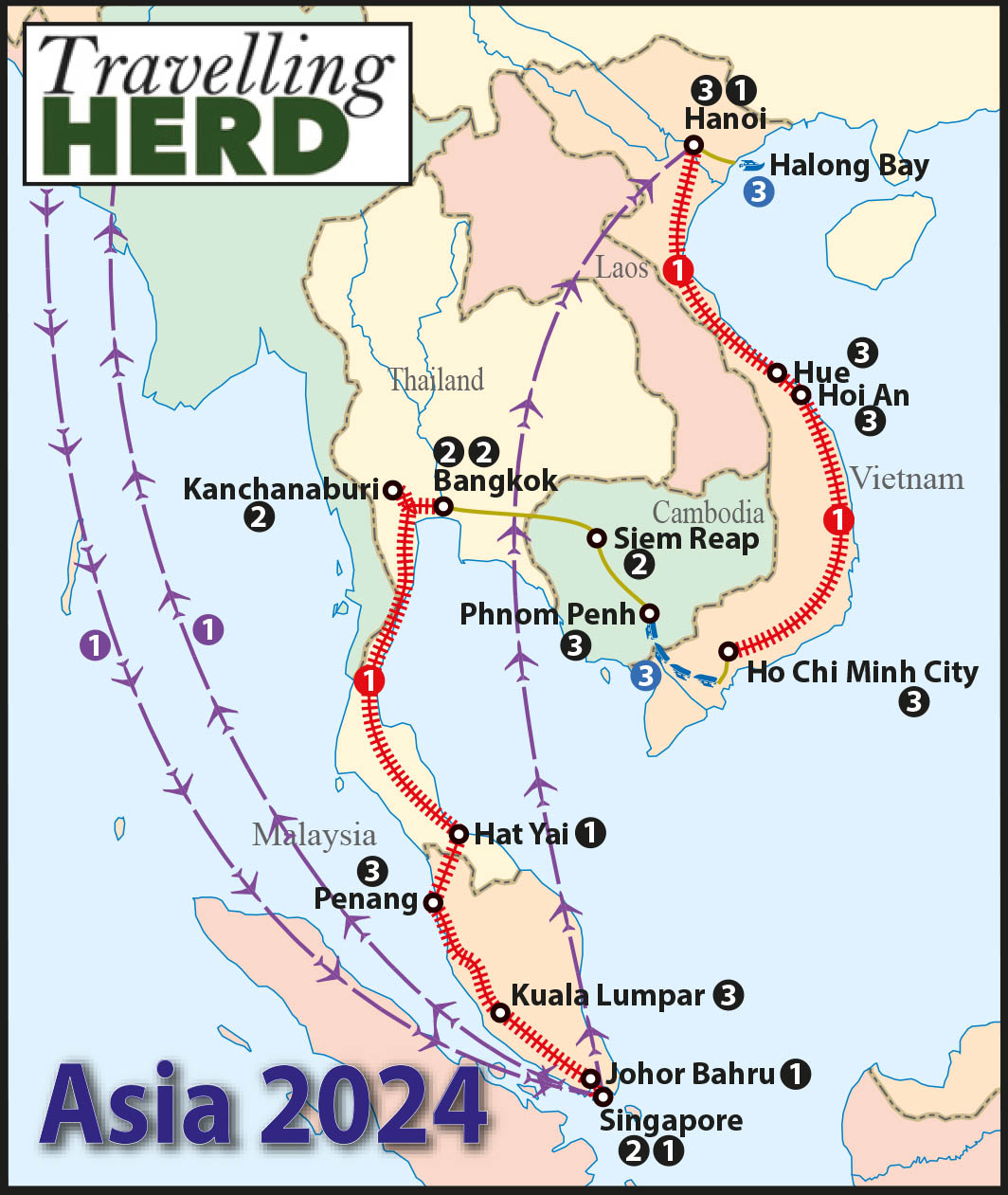Read this blog: The one where Robert eventually gets the literary references
Friday 22nd and Saturday 23rd March 2024
We had identified several historical sights we wanted to visit, predominantly temples and pagodas. First we passed the Temple to the Hung Kings which is a small modern shrine in Công viên Tao Đàn or Tao Dan Park. Built in 1992, it already needed some renovation work in 2012, and is dedicated to the first Kings of Vietnam. It stands in one of the largest parks in the city quite close to the Independence Palace where mature and well-established trees provide some welcome shade. The Hung Kings are venerated for, among other things, teaching the Vietnamese how to grow wet rice. This small temple also has the dubious privilege of being the place where Matilda saw her first rat running past.
It should not be confused with the much more imposing monument in the Hung Kings Memorial Park.

Next we passed the Xá Lợi Pagoda [below left] which is the largest pagoda in the city. Built in 1956 it was the headquarters of Buddhism in South Vietnam and the centre of the Vietnamese Buddhists’ protests against religious persecution by the predominantly Roman Catholic government which came to a head in 1963.

A little further along the route we came to Vĩnh Nghiêm Pagoda, the first pagoda in Vietnam to be built in a traditional architectural style but using concrete. Work started in 1964 and it took seven years to complete. Inside there is a complex of shops and services and to the left as you enter the site stands an imposing square tower [see below] consisting of seven floors which is nearly 40 m high.
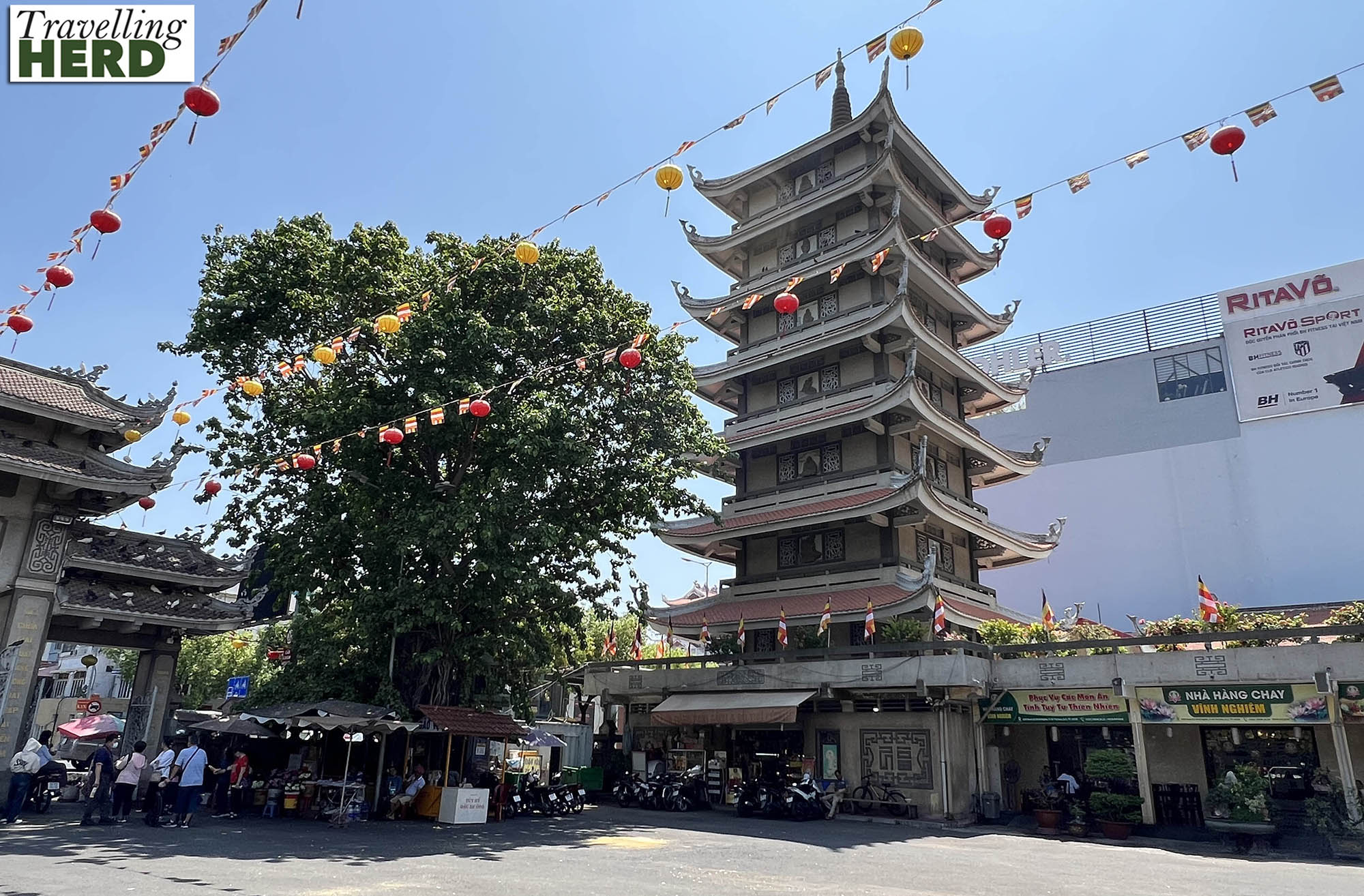
From here we walked on to Hồ Chí Minh Square. Once again the Vietnamese have, over the years, repurposed a beautiful French colonial building. Saigon City Hall, officially called the Hồ Chí Minh City People’s Committee Head Office (Trụ sở Ủy ban Nhân dân Thành phố Hồ Chí Minh) was constructed between 1902 and 1908 as the Hôtel de Ville, but since 1975 it has housed various government departments including the Hồ Chí Minh City People’s Committee, Hồ Chí Minh City People’s Council and Hồ Chí Minh City People’s Court.
A statue of Hồ Chí Minh, Vietnam’s revered communist leader, stands in front of City Hall on Đường Nguyễn Huệ or Nguyễn Huệ Boulevard which leads down to the river. It does indeed feel a bit like a wide French boulevard, bordered by carefully clipped hedges and colourful planting with shops offering consumers the chance to buy expensive big brand names under Hồ Chí Minh‘s watchful eye.

It was a short walk to Saigon Opera House. Completed in 1900, it can seat 500 people and is an another fine example of French colonial architecture. It has not always been used as a performance venue however. As well as serving as a theatre, the Opera House was used for almost twenty years as the seat of government. The theatre housed the National Assembly as one chamber between 1956 and 1967 and then both the Lower and the Upper Houses of the National Assembly of South Vietnam sat here. The People’s Congress of Deputies was housed here in 1975 and in 1976 it became a theatre once again.
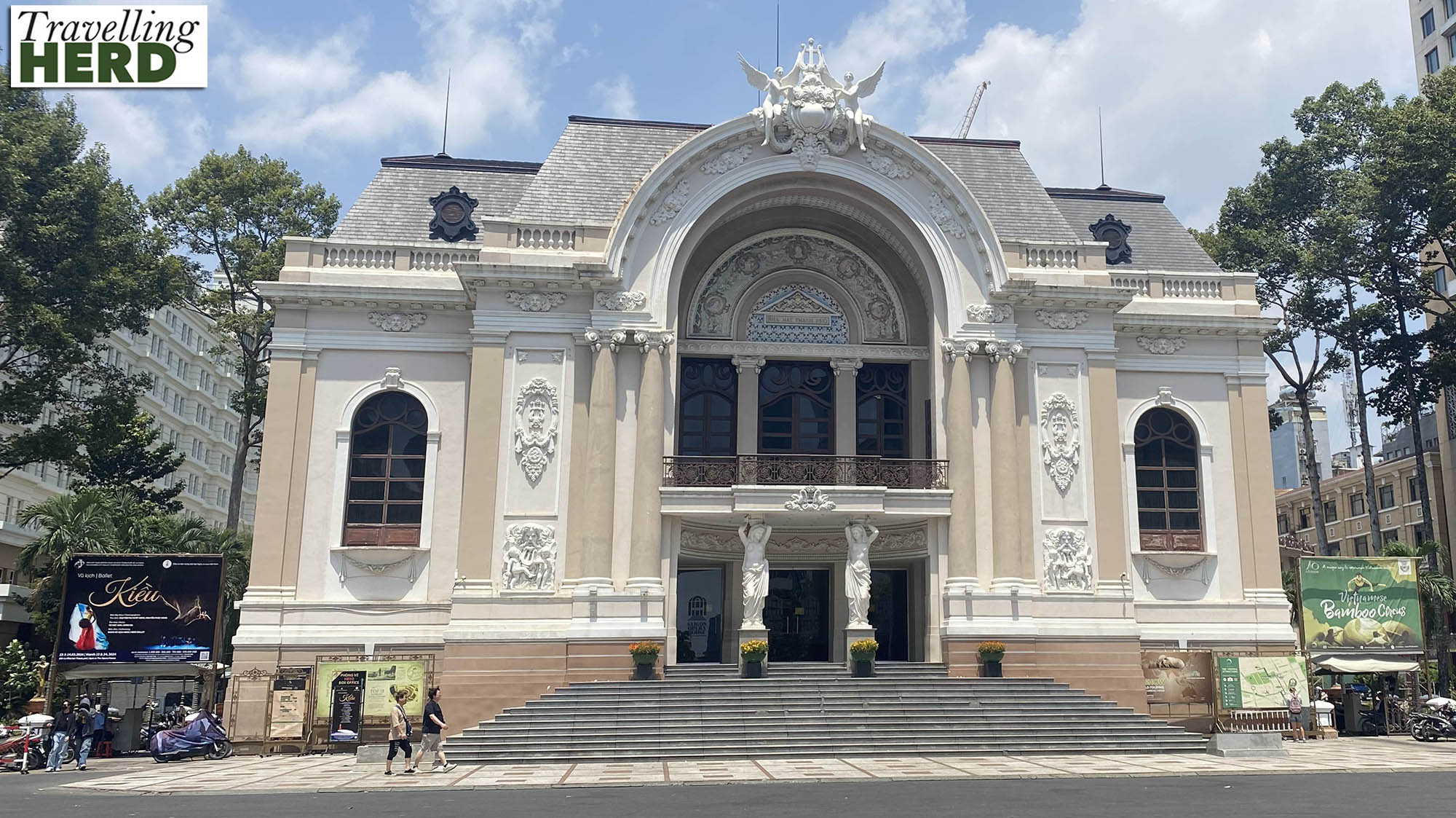
Saigon’s roads were originally simply identified using numbers in order, starting from the Saigon River. In 1865, the French Commander Admiral De La Grandiere renamed these roads and the Sixth Road became Rue Catinat and is now Đồng Khởi Street. In 1878, Pierre Cazeau, started building the Hotel Continental on one corner. It opened in 1880 and so is contemporaneous with Notre Dame Cathedral and Saigon Post Office.
During both the First Indochina War and the Second Indochina War [American War], the Continental Hotel was a popular haunt for correspondents and journalists. Matilda has read Graham Greene’s The Quiet American on this trip and both Rue Catinat and the Continental Hotel are mentioned so she wanted to see them. The ground floor bar was apparently nick-named the Continental Shelf but Matilda failed to mentioned this as she felt it was too early to encourage a visit to a bar, despite the heat.

The Saigon Opera House and the Hotel Continental are situated on a busy junction. Joe, who now lives in Saigon advised us the previous night not to stop walking when crossing the road and never ever step backwards. Matilda has taken this on board and is still trying to perfect the art of using Robert as a human shield when she crosses the road, always making sure he is on the side where the majority of traffic ought to be coming from. This technique is not foolproof however as the traffic sometimes cuts the corner and travels on the wrong side of the road.
From here we sought out the Saigon Centre which was an oasis of air conditioned calm but we were not in the mood for retail therapy. We are trying to be very strict about acquiring extra luggage to carry.

Having cooled down in the shopping centre Robert felt after walking seven miles in the heat he had earned a chilled beer. Our route took us past the Old Market . . .
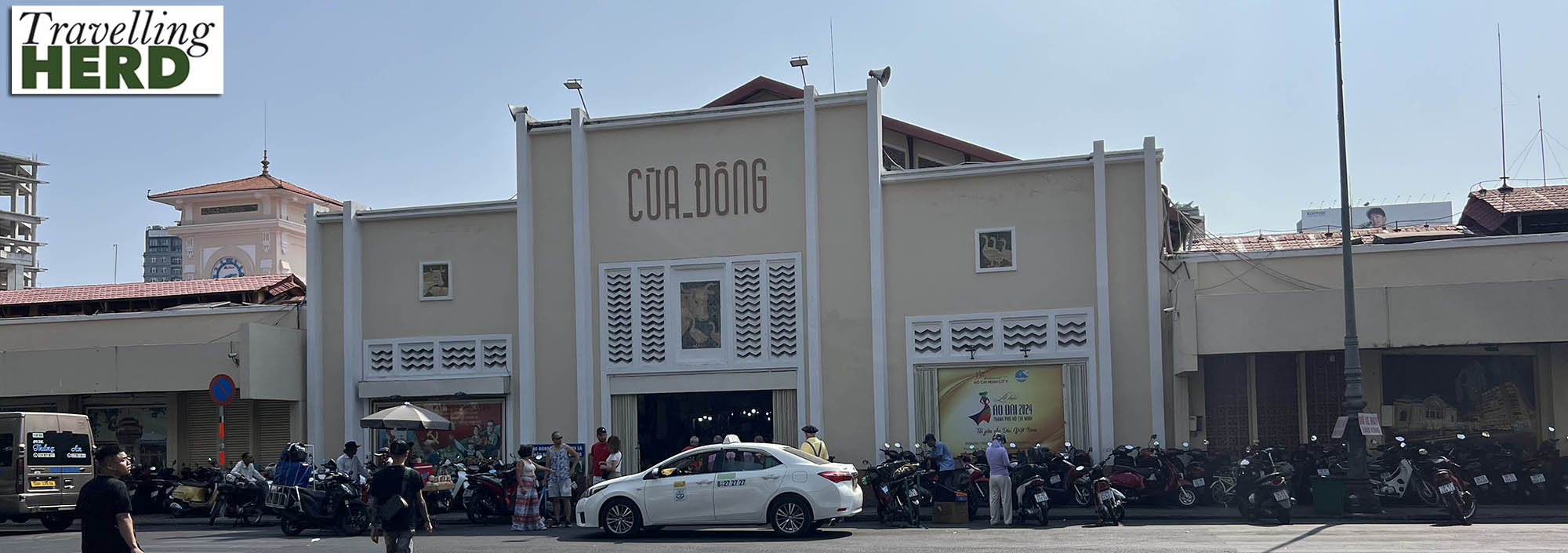
. . . near our hotel and on to Belgo. This is a bar where the owners had bought a brewery in Belgium and dismantled and shipped all the brewing equipment to Vietnam to start creating genuine Belgian beer in South east Asia. Robert had already sampled a bottle of Belgo Cherry and was keen to have some more.
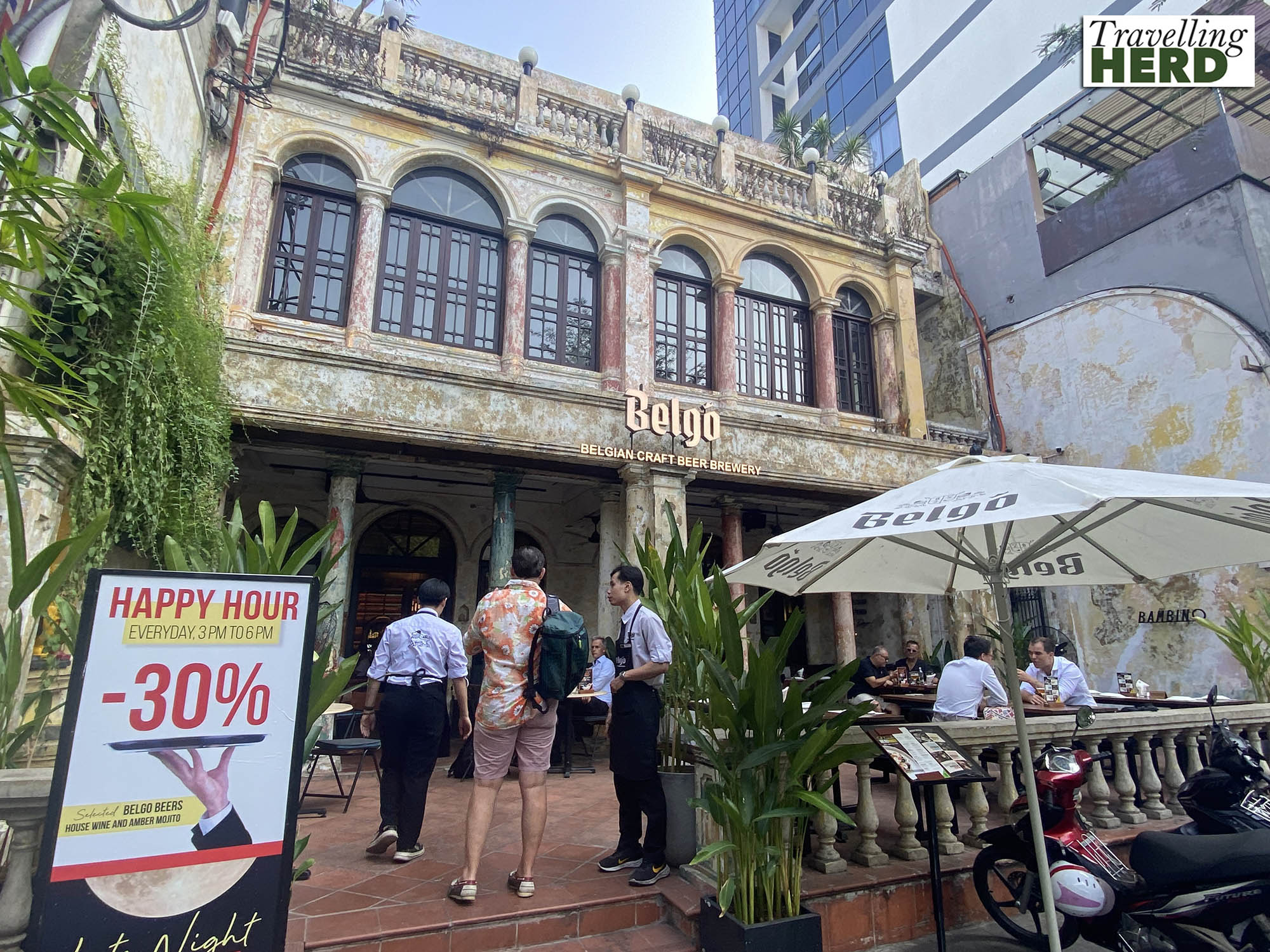
Joe told us that the target demographic was the rising middle class and tourists. Our verdict? The beer was indeed refreshing and tasty but it was also far more expensive than other places in Vietnam and we decided that we would try not to be typical tourists and would relocate to eat.

The following morning Robert had markets on his mind. We first went to the Russian Market where puffa jackets and ski wear predominated. We could not imagine ever needing such warm clothing ever again, though no doubt we will, come winter back in the UK
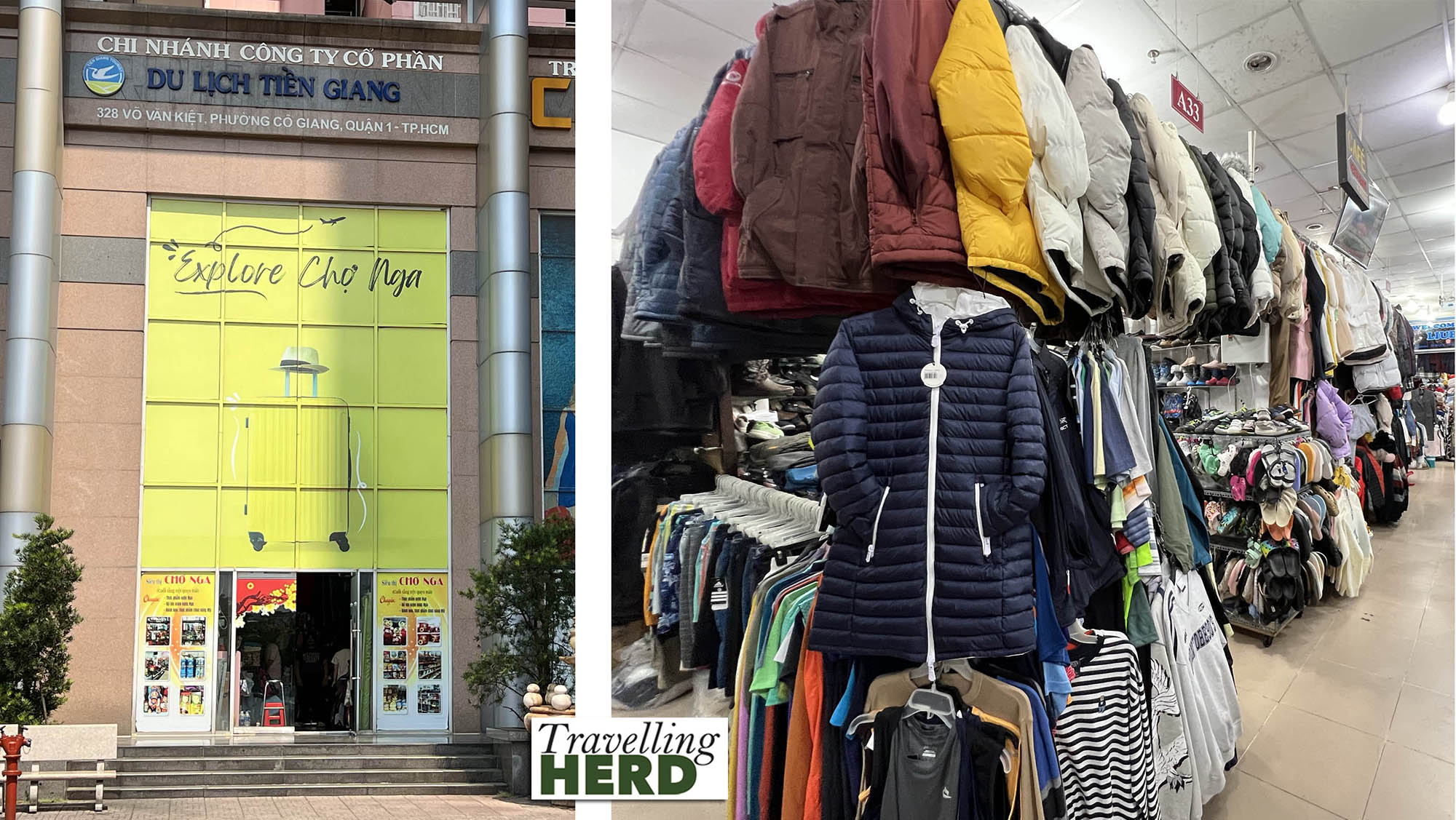
From here we went to the Dân Sinh Market which specialises in a wide range of industrial equipment and hardware including parts for household appliances, cars and motorbikes. Matilda felt that not many people would think to include a hardware market on their sightseeing route. Originally it was famous for war memorabilia such as army equipment, hats and boots but there is a limited supply and so fewer and fewer genuine items are available.

From here we walked to the Bitexco Financial Tower, to go up to the Skydeck on the 49th floor for the views.
As we crossed a road we noticed a couple following us. We got chatting and they decided they would follow us to the Skydeck while they waited for friends to arrive on a different flight. It transpired that her mother was Vietnamese and father had been in the US army during the American War. Although he had decided to stay in Vietnam, there came a time when the family was told that they should leave for their own safety.
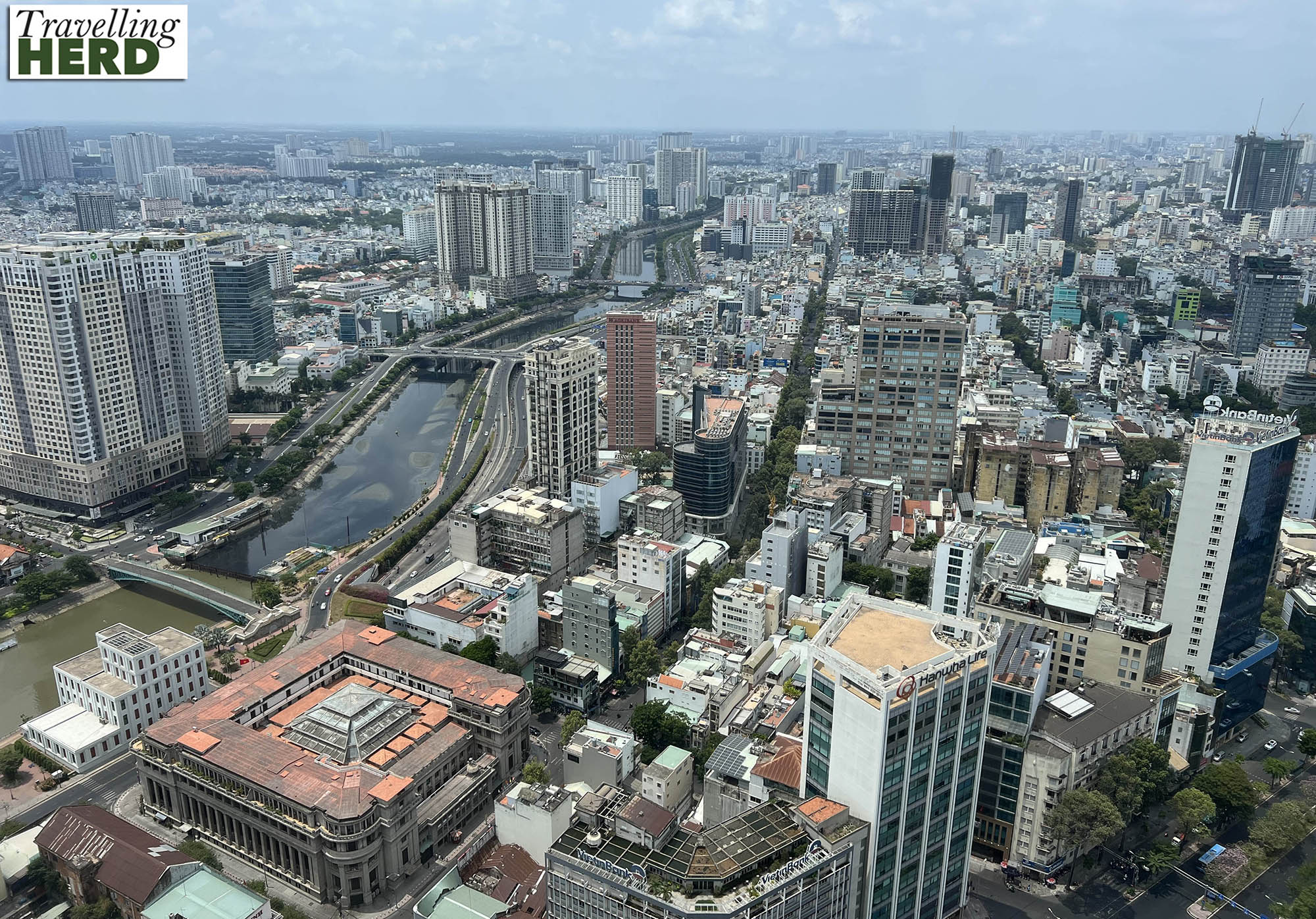
We had seen from the Bitexco Financial Tower from Vo Roof the evening before and spent some time looking for various landmarks we recognised.
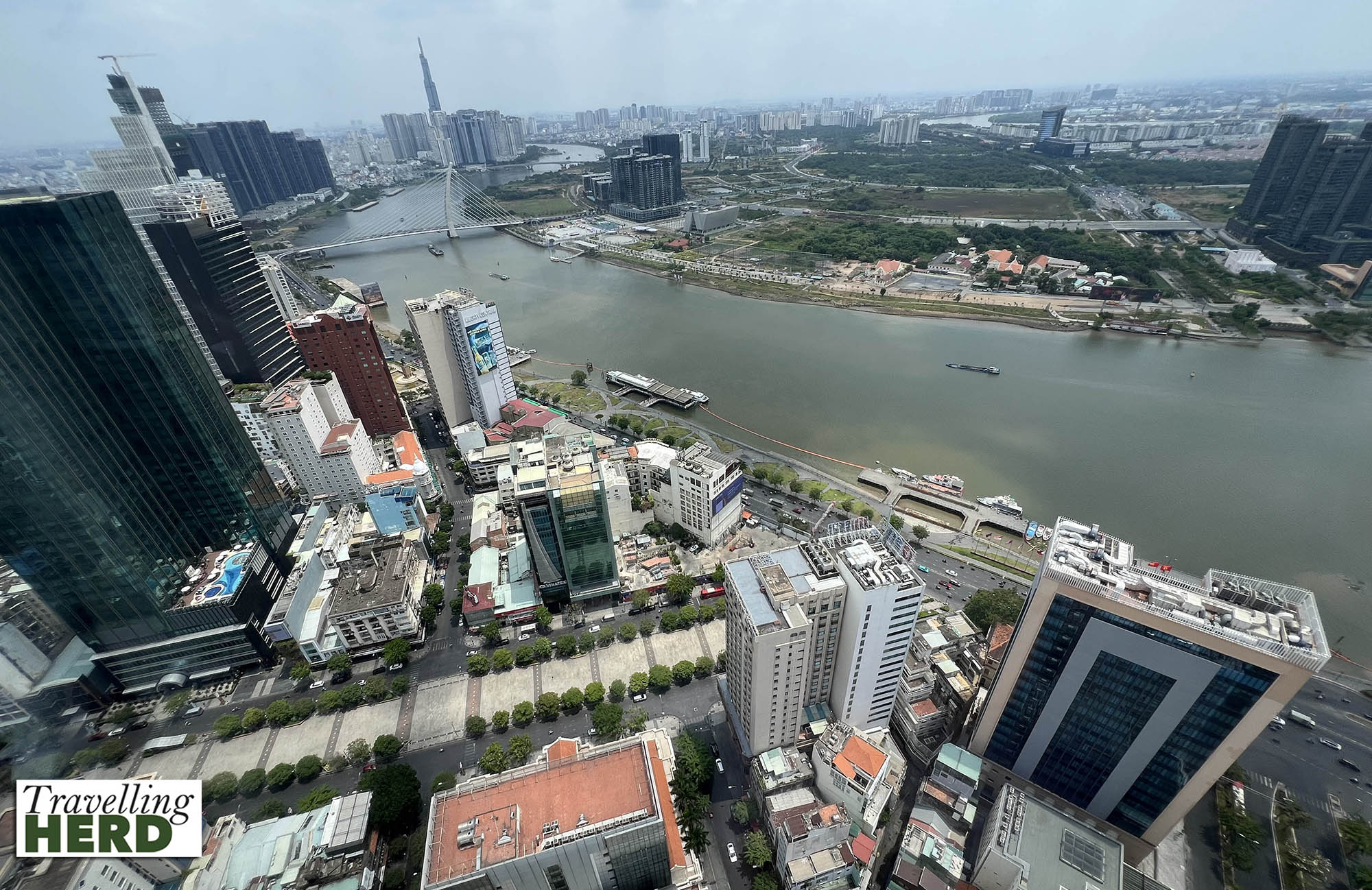
The views were indeed impressive and we did identify Vo Roof.

The tower itself is quite striking and was designed to resemble the country’s national flower, the lotus. A helicopter landing pad protrudes from the side but apparently helicopters are banned from flying over the city so it has never been used. Nor is it likely to be.
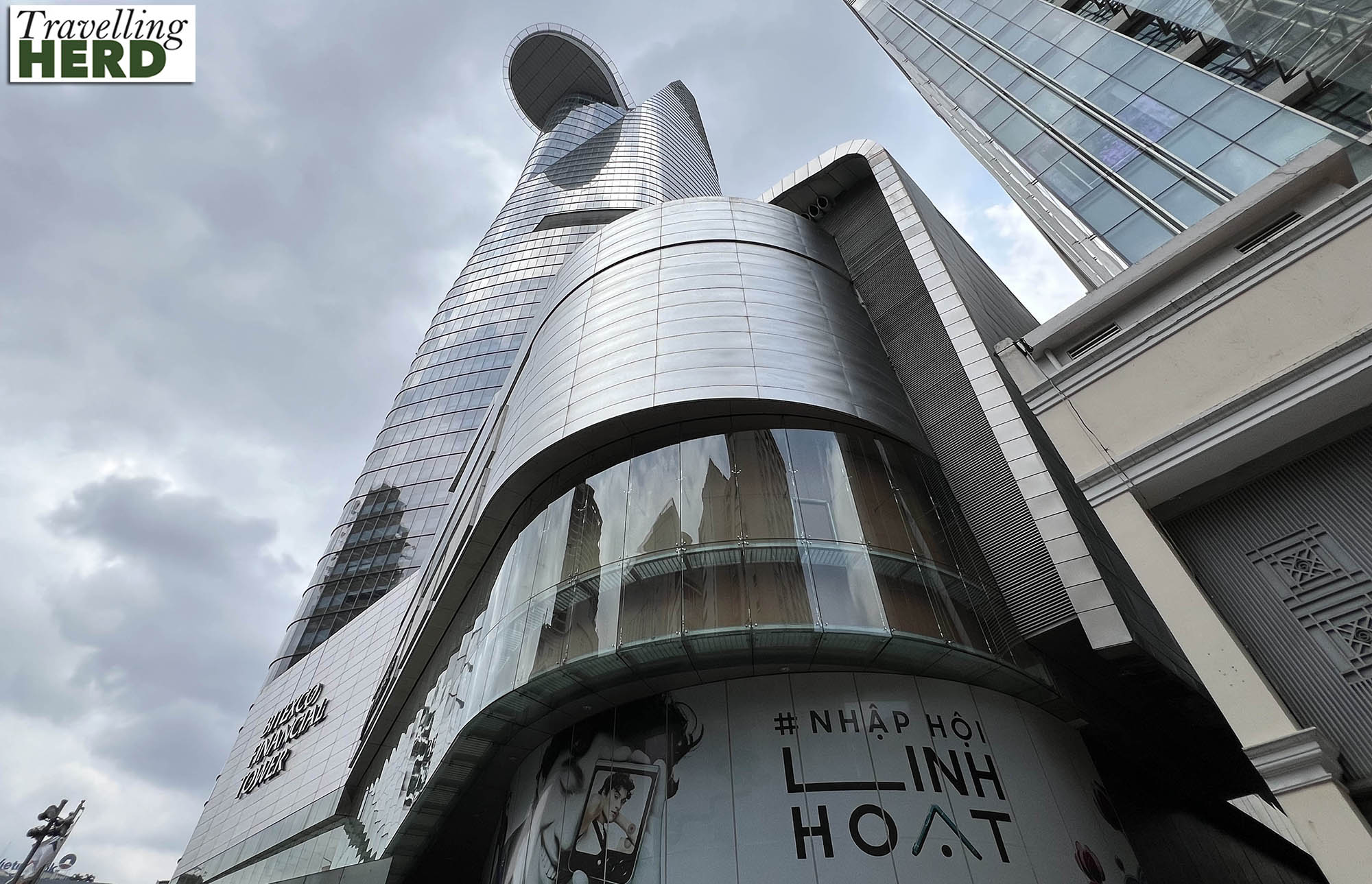
We walked to the river as the Water Bus had been recommended to us. Unfortunately the timings of the services meant we could not realistically go on it this time. Walking back towards the centre we spotted a good view of the Skydeck, and it’s helipad, between the high-rise buildings.
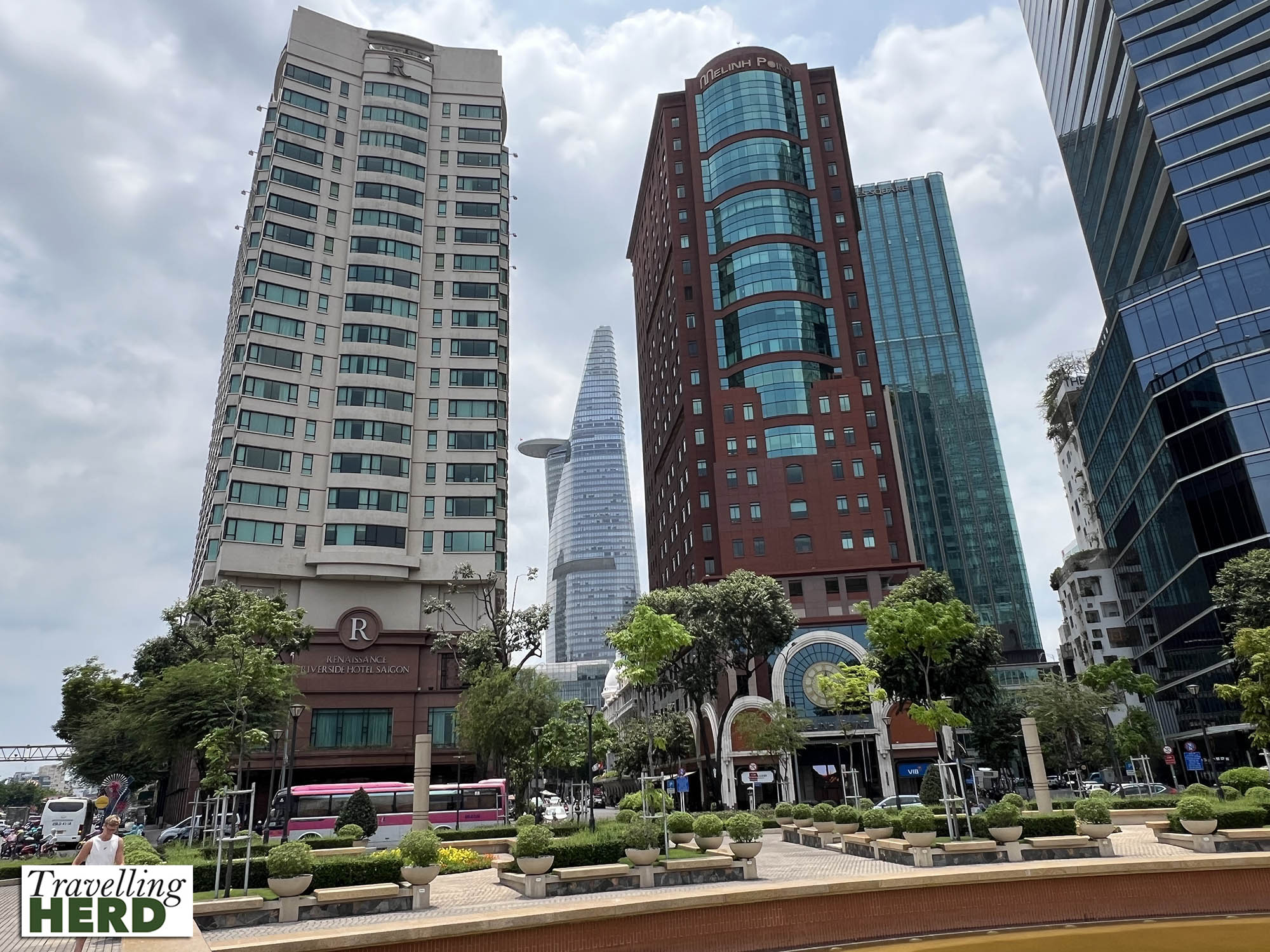
The following day we were due to check in at the Hôtel des Arts for our Mekong river cruise so we decided to acquaint ourselves with the location. They had a very pleasant sky bar which Joe had recommended and was open to non-residents so we agreed it was time to rehydrate.
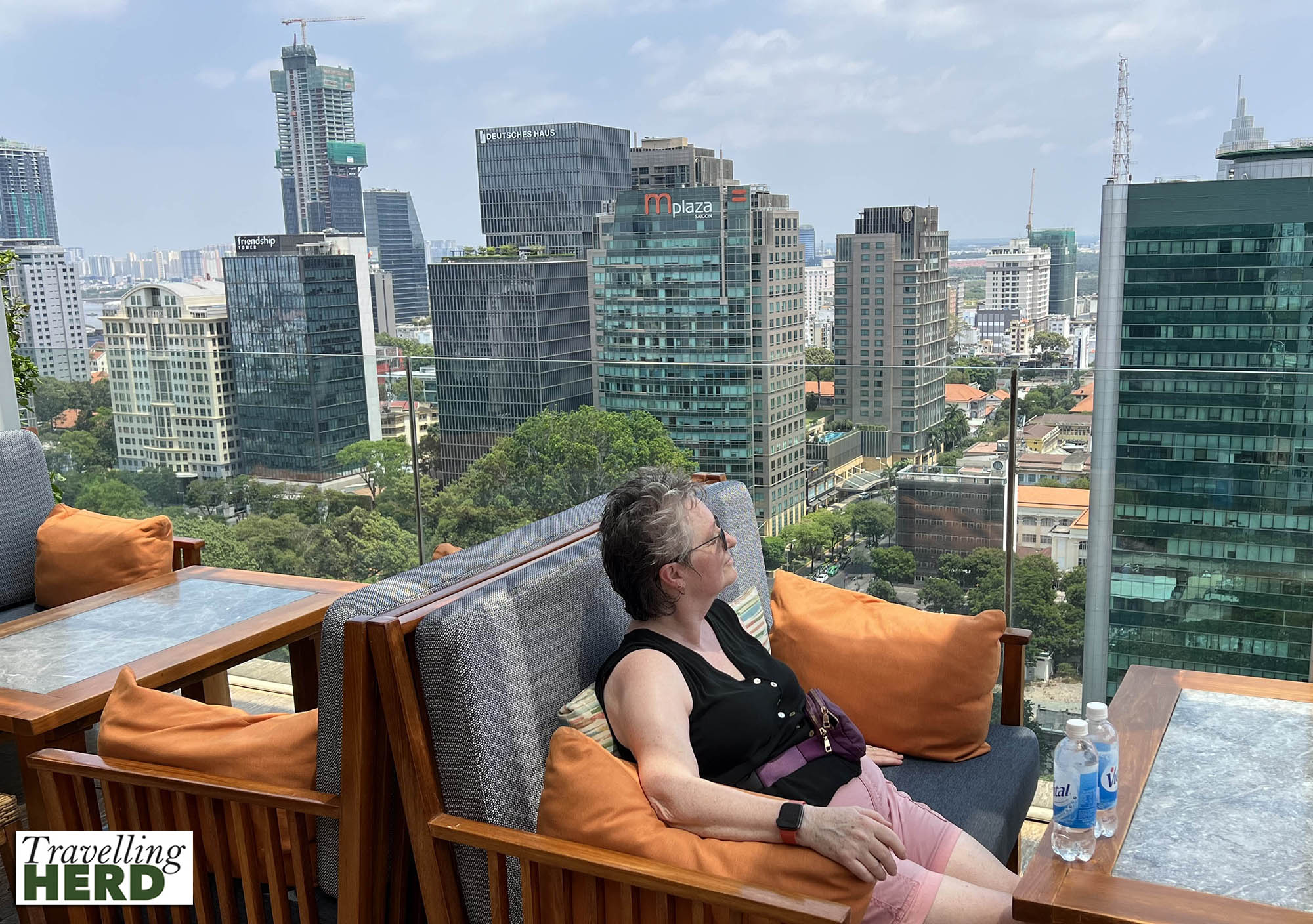
Our route back to our own hotel and the pool took us past Book Street, which stretches for one hundred metres down to Notre Dame Cathedral and is an pedestrianised haven for book and coffee lovers alike.

Robert then insisted on dropping into the Heart of Darkness Craft Brewery for more liquid refreshment and while there we booked a table for later in the evening.

As we left the hotel after a dip in the pool we saw this lovely little gentleman who was dressed and ready to drive with all the appropriate personal protective equipment [PPE].
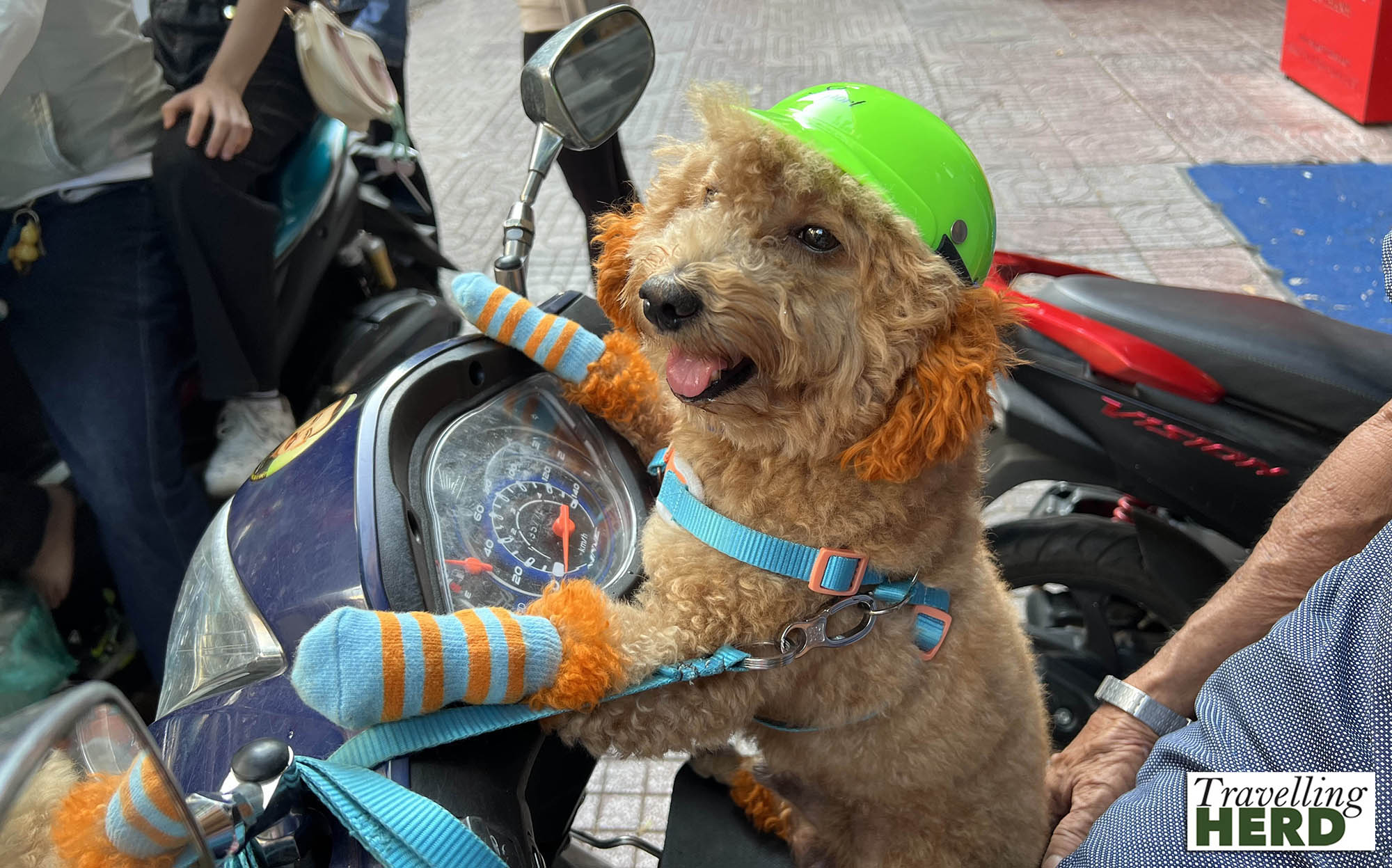
We returned to Heart of Darkness to eat and for Robert to sample a few more of the beers on offer. Matilda had studied Joseph Conrad at ‘A’ level and so appreciated all the beer names with literary references. It took Robert a little longer to catch on. For those of you who don’t know Heart of Darkness was a Joseph Conrad novel set in the Congo but it was the inspiration and provided the story-line for the iconic Vietnam War film Apocalypse Now [director’s cut].
Although not very Vietnamese, Robert pronounced his Black and Bleu Burger with blue cheese sauce to be exceptionally good [see Dish of the Day].
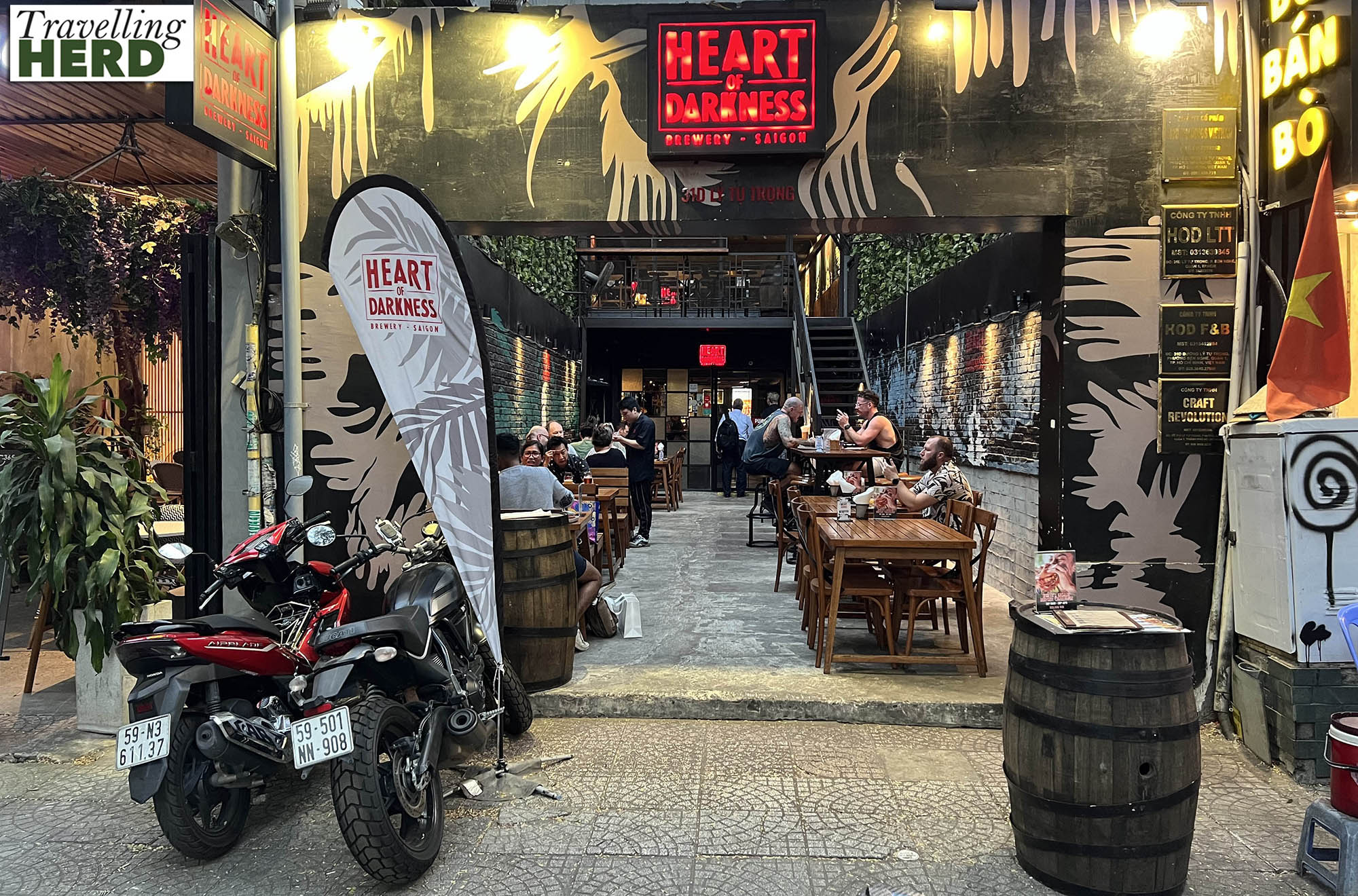
Selfie of the day:
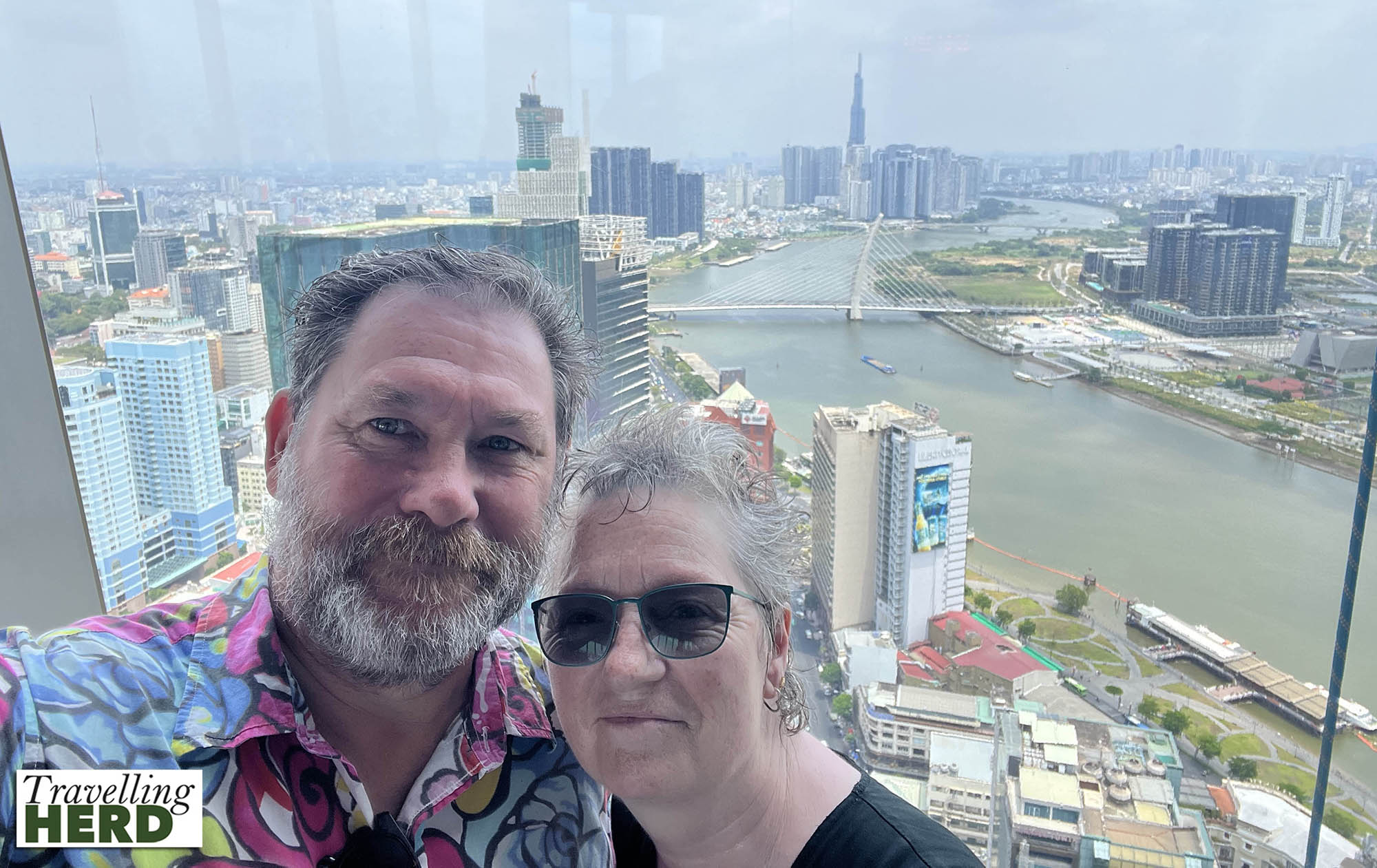
Dish of the day:
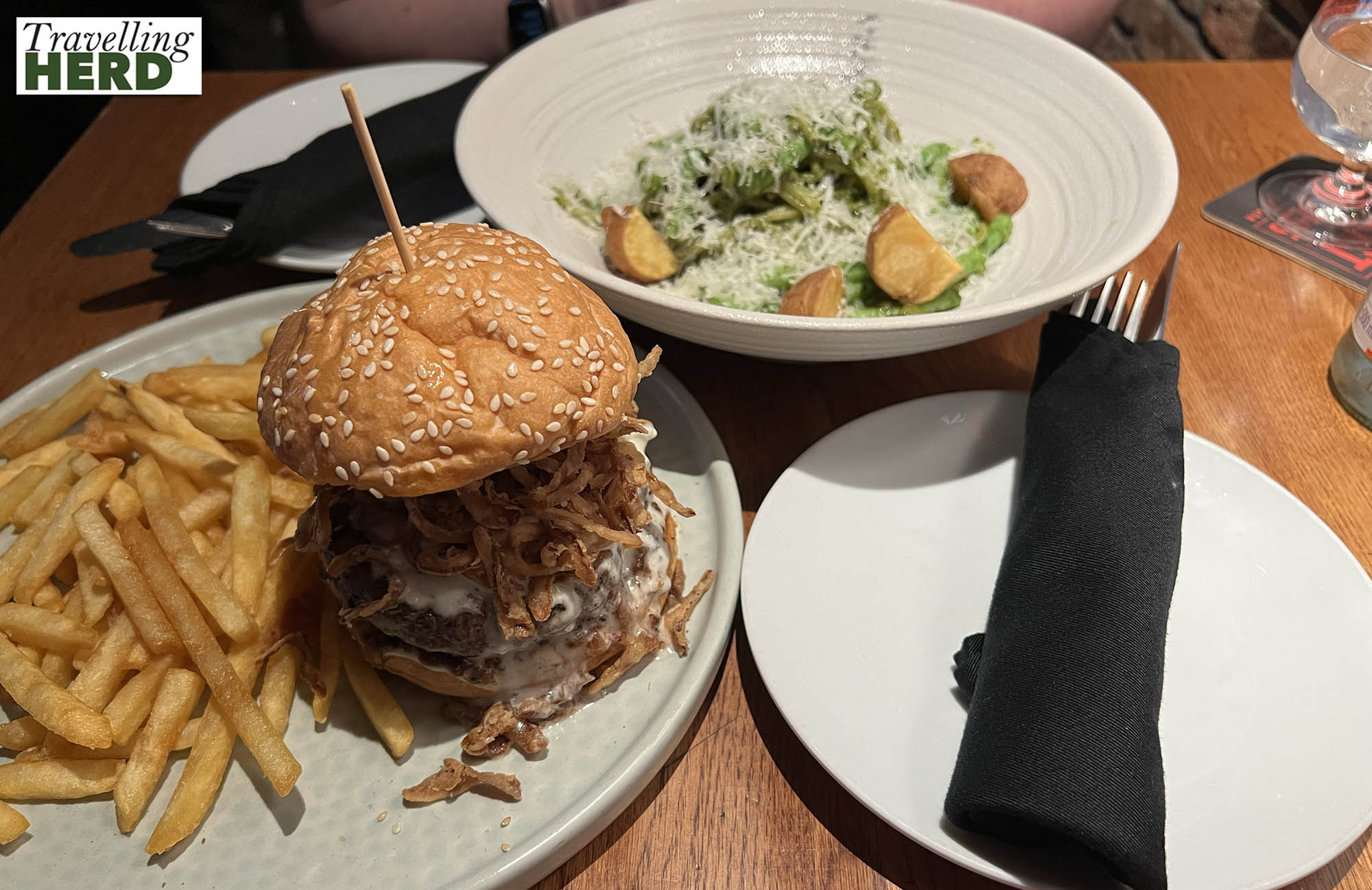
Route Map:
